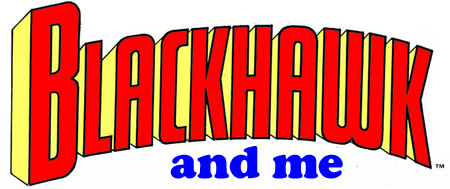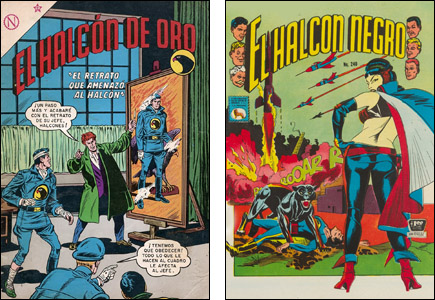Before you read this, you might want to read Part 1.

DC Comics acquired the Blackhawk comic book in 1956 and published it until 1968. For most of that time, it was still about a handsome Polish soldier (named Blackhawk) who headed up a troupe (also named Blackhawk) of skilled soldiers who flew neat-looking airplanes and got into incredible adventures around the world battling evil forces. Though other members sometimes popped in for a story or two, the team members were pretty much standardized as Olaf, Chuck, André, Stanislaus, Hendrickson and Chop-Chop.
Chop-Chop started out as a racial stereotype cook/houseboy for the team and he was played mostly for laughs. As that kind of stereotype became increasingly less funny and tolerated, he morphed into a more realistic and full-fledged member of the squad — and one proficient in martial arts. When I worked on the comic in the eighties, we got some letters from folks who were very pleased with how Chop-Chop had evolved — which I'd had very little to do with — and one or two who were furious with me for not putting him back the way he was in 1941.
When I started buying DC comics around 1960, I didn't buy the war or western or romance titles because those kinds of stories didn't appeal to me then. I didn't buy Blackhawk because it seemed to be a war comic…which it kinda was even though it didn't seem to be set in any war in particular. And it sure had a lot of monsters and outer space aliens on its covers.
Many years later, I met a gent named George Kashdan who had been an editor at DC Comics at the time and who had a lot to do with Blackhawk while he was with the company. I told him I wasn't buying it for a while because I really wasn't sure if it was a war comic or a super-hero comic. He said that was the problem with it: It wasn't enough of a super-hero comic to please the super-hero comic fans and it wasn't enough of a war comic to please the war comics fans.
During most of this time, Blackhawk was published monthly, which was a status I thought DC only bestowed on their top-selling books. I asked if Blackhawk was a top-selling book. He said, "Never." I asked why it was monthly then. He said, "Damned if I know." And this man was, for several years, the editor of the comic.
Then he said, "I think it had something to do with the sales overseas. It was a huge seller, just not in this country. All over the world, publishers were paying us to buy the rights to reprint those issues." Indeed, there was so much love for this franchise that there were two separate (I think) lines of Blackhawk comics in Spanish.

I don't know a whole lot about this but one publisher was putting out El Halcón de Oro ("The Hawk of Gold") and the other was putting out El Halcon Negro ("The Black Hawk"), some with translations of the DC issues and some with original, home-grown stories. Same premise, same characters, sometimes (I'm told) very similar stories. I have no idea how they could co-exist. Maybe one publisher bought the rights from DC while the other acquired them from the original publisher of Blackhawk, Quality Comics.
Perhaps the sales from overseas reprints — whichever ones DC was paid for — kept Blackhawk in the black and on the schedule. Since the editor of the comic couldn't explain it, don't expect me to. Anyway, sales in this country weren't great. In 1964, they tried to boost them a bit by giving the comic a new title logo and giving the soldiers more colorful uniforms…but I'm guessing they felt they couldn't tamper much with the content of the comics without endangering those foreign sales.
Mr. Kashdan told me he was ordered to not mess too much with the format but not why. Finally though in 1967, DC Comics was beginning to undergo some upheavals. Marvel was gaining on them in sales and artist Carmine Infantino was added to the editorial staff with the orders to shake things up. Blackhawk was one of the first projects that seemed to require a major facelift and surgery. And boy, did they shake it up…as we'll discuss in our next installment.